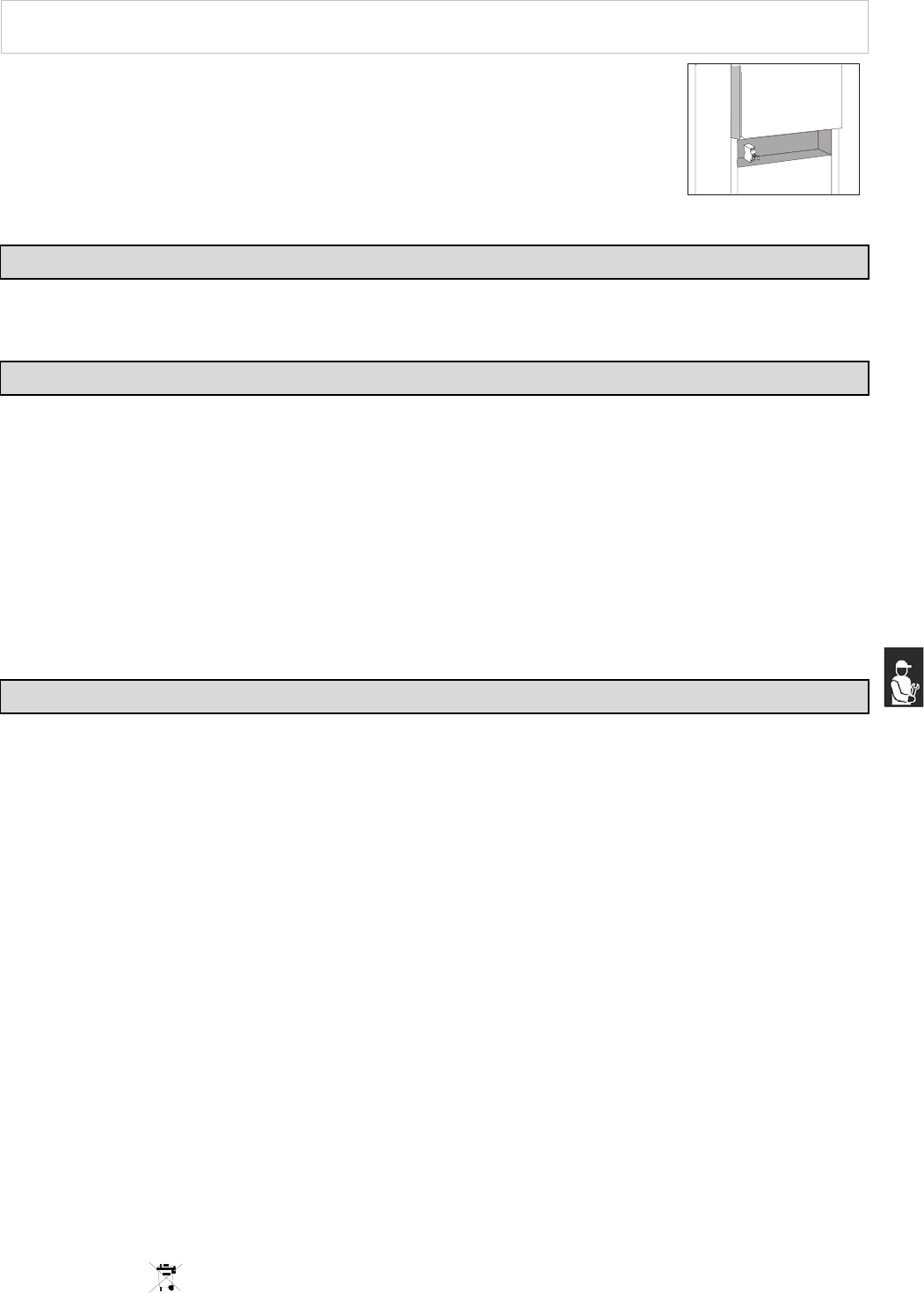
-
-
-
I
I
I
N
N
N
S
S
S
T
T
T
A
A
A
L
L
L
L
L
L
A
A
A
T
T
T
I
I
I
O
O
O
N
N
N
M
M
M
A
A
A
N
N
N
U
U
U
A
A
A
L
L
L
-
-
-
39
Two delayed fuses are inserted in the power supply line;
extract the blown fuse and replace it with a fuse having the same characteristics.
(pict.45)
WIRING DIAGRAM PLATE
The diagram is shown on pict.47, see page 46.
CONTROL AND SAFETY SYSTEMS
The following information concerns skilled staff only:
Door micro-switch: Prevents the appliance from working when the door is open
Overall protection fuses: Protect the whole power circuit from and short-circuits and overloads
Compressor thermal relay: Operates in case of an overload or working failures
Motor-fan thermal relay: Operates in case of an overload or working failures
Safety pressure-switch: Operates in case of coolant over-pressure
Cabinet temperature control: Is run by NTC probe through the relevant electronic card
Core temperature control: Is run by PT100 probe through an electronic card
Controlled substances leakage: appliances with a content of coolant exceeding 7lb should be checked
for leakage yearly
DISPOSAL
WASTE STORAGE
At the end of the product life, avoid release to the environment. The doors should be removed before
disposal. Temporary storage of special waste is permitted while waiting for disposal by treatment and/or final
collection. Dispose of special waste in accordance with the laws in force with regard to protection of the
environment in the country of the user.
PROCEDURE FOR ROUGH DISMANTLING THE APPLIANCE
All couintries have different legislation; provision laid down by the laws and the authorised bodies of the
countries where the demolition takes place are therefore to be observed. A general rule is to deliver the
appliance to specialised collection and demolition centres. Dismantle the refrigerator grouping together the
components according to their chemical nature. The compressor contains lubricating oil and refrigerant,
which may be recycled. The refrigerator components are considered special waste, which can be assimilated
with domestic waste. Make the appliance totally unusable by removing the power cable and any door locking
mechanisms in order to avoid the risk of anyone being trapped inside.
DISMANTLING OPERATIONS SHOULD BE CARRIED OUT BY QUALIFIED PERSONNEL.
THE SAFE DISPOSAL OF WASTE FROM ELECTRICAL AND ELECTRONIC EQUIPMENT (WEEE
DIRECTIVE 2002/96/EC)
Do not dump pollutant material in the environment. Dispose of it in compliance with the relevant
laws.
Under the WEEE (Waste Electrical and Electronic Equipment) Directive 2002/96/EC, when scrapping
equipment the user must dispose of it at the specific authorised disposal centres, or reconsign it, still
installed, to the original seller on purchase of new equipment.
All equipment which must be disposed of in accordance with the WEEE Directive 2002/96/EC is marked with
a special symbol
.
Pict.45


















